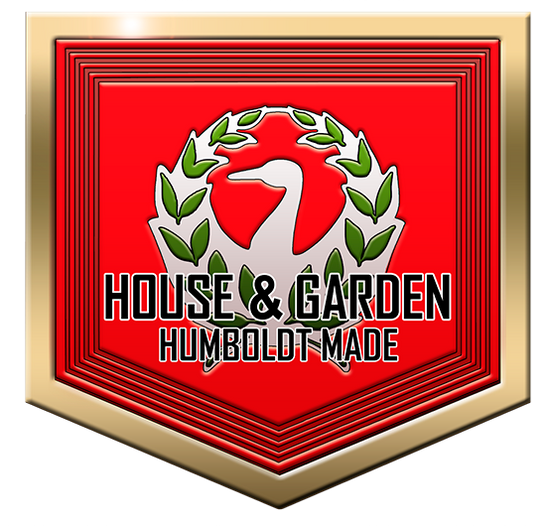Photo courtesy of: Jeff Haines, Botanist.
List of supplies:
- LED lights
- Lights are sized at 4x4 to accommodate a space of the same size.
- Check out Dazor Lights for the best LED's in the business
- Exhaust fan
- Ducting
- Carbon filter
- Odor control
- Silencer ( optional )
- Circulation fan
- Keeps air moving in grow area. This helps control moisture limiting mold growth
- Plants that blow in the wind become stronger.
- Timer or a controller for more advanced setups
- Dehumidifier
- CO2
- Hygrometer to check relative humidity
- Mini-split A/C unit.
Things to control:
- Light
- Temperature
- Humidity
- CO2 in the air
- Air flow inside the grow area
- Exchange of air from the outside
- VPD = Vapor Pressure Deficit
- Transpiration Rate
Things to ponder…
- Sealed or non-sealed
- Sealed means there is no exchange of air from outside the room.
- Sealed will require heating, cooling and humidity control. This requires a mini-split.
- Size of exhaust fan.
- This should be determined by the volume of the grow space. The CFM of the fan should be equivalent to the volume of your grow space.
- Is a silencer needed?
- Do you have neighbors or an adjoining room that the sound of the fans could bother.
- Timer or controller
- Do you want simple or ultimate control?
- If you opt for control, how much do you want to spend on a controller?
- What do you want the controller to control?
- Controllers can be very advanced and control everything or almost as simple as a timer.
- Do you want to use CO2?
- What is the cost of a co2 set up?
- CO2 increases the respiration rate of your plants super powering their growth and potential yield.
- Do you want a flower room and a veg room?
- What is the advantage of this?
Which environment do you want to build?
- Grow tent
- Grow room
- Sealed room
- Unsealed room
You have probably grown a plant or two in the past. Maybe even a grow tent or room. But now you want to set up a grow environment. Do you know where to start? Do you know what a grow environment does to supercharge your plants? These are questions you should be asking to ensure you set up a quality grow environment that will actually maximize your plants.
It’s entirely possible to set up a grow room that will kill your plants. Too much humidity is the easy culprite to consider, but what about temperature or the lack of airflow? Have you heard of VPD? ( Vapor Pressure Deficit ) What the hell is that, was my reaction when I first heard this acronym. But let’s take a step back. VPD is the appitamy of goals as a grower. It doesn’t need to be your focus, unless you are ready to monitor every detail of the atmosphere inside your grow area. Which is a daunting task if you are relatively new to utilizing a grow room.
Ok, so you're setting up a grow environment. First thing you should create is a list of supplies. A budget is a good place to start before making this list. Unless you are flush with capital, you're going to need to make a few decisions based on your budget. But don’t fret if you find you can’t afford exactly what you want to do. Whatever you invest in now will certainly be usefull in this grow and your next. Think of what you buy this round as an investment. This assumes future grows of course. Some just want a plant or two per year. This of course will also dictate what type of grow environment you choose to set up.
So, I’m sure you have figured out your budget, right? The most fashion forward part of a grow room are the lights, so most would be looking at lights first. But there is at least one thing to consider before you pick out those cool lights. You need to know if you want a sealed or non-sealed room.
A sealed room doesn’t have to hold a vacuum. It simply doesn’t exchange the air in the room with the outside air. Sealed rooms add another degree of control to your environment. A non-sealed room is subject to the humidity and temperature of the air outside the room. Not to mention any possible pathogens or pollen that could contaminate your precious plants.
In an unsealed room, a room that exchanges the air with air from the outside, you definitely want a filter. A carbon filter will clean the incoming air of pathogens and remove odors before the air is exhausted. Not everyone appreciates the aroma of fine cannabis.
You might think that a sealed room doesn’t need a filter. Guess again. Even in a sealed room, which there is no such thing as a completely sealed room, you need a filter to clean the air. Filters will remove pathogens and the build up of smell from your plants.
Sealed room or not, you need to choose your fans based on the volume of your grow room. The fans you choose, particularly the fan you use to filter the air, must exchange the air in the room every minute. Fans are rated in CFM’s. Cubic Feet Per Minute. In addition to your air filtration fan, you will want a circulation fan. A circulation fan will prevent microclimates and stagnant air that could be more humid than the rest of the room. In addition to a filter, you might have a need for a fan silencer.
Once you have figured the volume in your room, chosen the appropriate fans to filter and circulate the air, now is a good time to consider your lights. LED’s are taking over the market for sure, but they still have a higher upfront cost, which does become cost effective over time. Either way, costs at the start when you're buying a lot of equipment adds up. If you have the budget, don’t think twice and buy LED’s. If you really want to optimize your light situation, by all means dig into spectrum and PAR. This article isn’t intended to get into the minutia of each system of a grow. Just a general outline of the variables and equipment needed.
To move onto the next topic, how are you going to control the light cycle, fan speeds, temperature and humidity? Ultimately cannabis can grow under varying conditions. As evidenced by outdoor grows. Although, the control you get from a room enables you to maximize the potential of your plants. With that control you will need a method of turning the lights and fans on and off. Fan control is necessary to control the temperature and humidity in your grow space. Simple timers can work. Like LED lights, if you have the budget, controllers will provide you with a much higher level of control. Controllers utilize sensors for temperature and humidity. With these measurements a controller can decide when to activate your systems. Controllers vary wildly in their price and capability, but if your budget allows, it will definitely step up the level of control you have in your environment. If budget is an issue, you can have success with timers.
It’s worth mentioning with a controller there are a myriad of sensors that can be utilized to fine tune the control of your environment. To list a few; smoke detector, humidity sensor, temperature sensor, water detector, light sensor, and much more. Controller setup can be quite complicated, but can also give you the ultimate in control of your grow room environment. Cost is usually a factor when putting together such a system.
Another thing to consider in regards to maximizing the potential of your plants is CO2. Most would say CO2 should only be used with a sealed room since exhausting the air would also exhaust your valuable CO2. There are processes that can be used to use CO2 in a non-sealed room. To fully utilize the potential of CO2 though, you need a sealed room.
CO2 isn’t absolutely necessary for a successful grow. It can complicate things enough to decrease the likelihood of success as well as significantly increase your budget. The budget increase is due to more equipment and the necessity to run a sealed room as not to waste valuable CO2.
This article is by no means comprehensive. It is meant to make the reader aware of the bulk of the variables to consider for a grow room. Refer back to our blog for more in depth articles to come.
Good luck in all your growing endevors.




